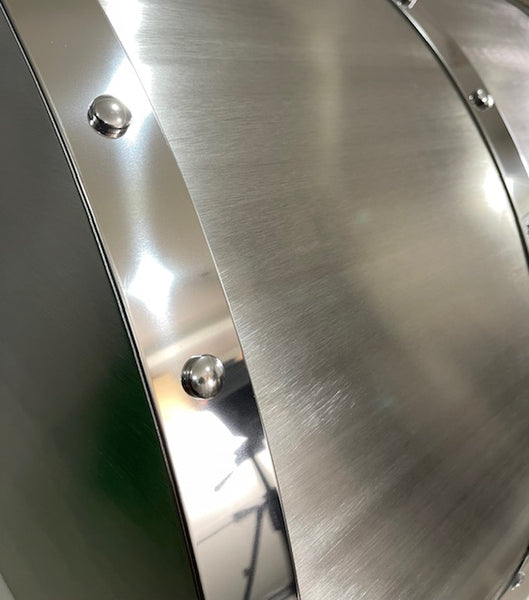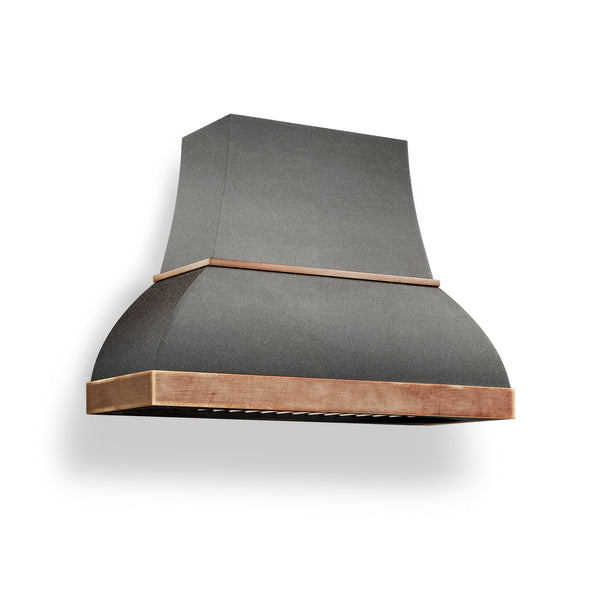Your Cart is Empty
Explore our newest colors - free samples available
Explore our newest colors - free samples available
Explore our newest colors - free samples available
Explore our newest colors - free samples available
November 16, 2023 5 min read
Range hoods play a meaningful role in the kitchen by removing cooking pollutants from the air. Despite their general durability, range hoods can eventually wear out and become less efficient over time. And as their performance decreases, the quality of the air in your home can be adversely affected.
ModernCopper would like to present you with a guide that highlights five clear signs that it's time to replace your range hood. Recognizing these signs helps ensure you have proper ventilation in your kitchen
A key indicator that your range hood might need replacing is a noticeable drop in ventilation efficiency. If you observe a significant reduction in airflow, check to see if there is a grease buildup. A buildup of grease on the range hood is a clear sign the unit may not be performing at its best.
Decreased ventilation performance can result from various factors, including the build-up of grease and debris in the hood's filters and ducts. These obstructions can severely limit airflow and reduce the system's ability to effectively remove unwanted air particles.
Before giving up on your range hood completely, try cleaning the filters. If cleaning the unit does not noticeably improve the range hood's ventilation efficiency, it could be time to consider a replacement.

Look out for changes in the way your range hood sounds. Unusual noises and vibrations coming from your range hood signal it may be time for a replacement. Be alert to any loud, continuous noises including humming, buzzing, rattling, or squeaking. The stranger the sounds, the greater the likelihood that something is wrong.
Accompanying unusual sounds, you might also notice excessive vibrations that can be felt on the hood itself. If the vibration is big enough, you may even feel it on nearby surfaces like cabinets or countertops. Strange noises and vibrations typically indicate problems with the range hood's components or mechanisms, suggesting the need for a replacement.
A significant indicator that your range hood may need replacing is the presence of cooking odors during operation. If strong cooking smells remain in the air, it's clear the unit isn't performing efficiently. Lingering odors can make your kitchen can be annoying, and if they spread to other areas of the home, it can be even worse.
Regular maintenance is important. One of the things affecting a range hood’s ability to remove unwanted smells is grease accumulation. An accumulation of grease signals that the ventilation system is not able to expel air effectively.
Damaged range hood components can affect performance. The deterioration of working parts is not just a major inconvenience in this case, but it can represent an operational hazard. A compromised fan that struggles to remove smoke and airborne particles can actually affect health and safety. You will want to look out for signs of physical damage. Here are a few key signs to be aware of:

Range hood manufacturers are evolving, and today’s range hood is markedly better than one built long ago. A range hood that's been part of your kitchen for over a decade might not match up to the efficiency and effectiveness of newer models. Take a moment to assess the functionality of your current range hood, and also ask whether it appears up to date.
Does your range hood enhance your kitchen's aesthetics, or does it look like a relic of the past?
Modern range hoods not only boast improved ventilation capabilities but also feature great designs that can elevate the look of your kitchen.
Opting for a newer range hood model can significantly boost indoor air quality and provide a more silent operation, contributing to a more pleasant kitchen environment. Additionally, a modern, efficient range hood can improve your overall cooking experience. As an added bonus, a custom range hood can also improve the value of your home.

Not all range hoods need to be replaced. If your range hood was designed with a separate liner, it may be possible to swap out the part that has gone bad. In these models, the liner, which houses the fan and the filtration system, can be removed and replaced. This is not to say that all modular units can be repaired in this way. Some units that were installed with a liner that is separate from the range hood shell are difficult to separate, meaning that you may need to replace the entire unit regardless.
Before throwing away your old range hood, first look to see if the unit is integrated. Is the range hood shell inseparable from the liner, or were the two built separately? If they were assembled as different sections, ask an HVAC specialist if they can be separated. Explain that you would like to consider replacing the liner, and in that case, what needs to be done in order to make it happen.
Upgrading to a new, fully functional range hood can significantly enhance safety and venting efficiency, ensuring your kitchen remains a clean, pleasant environment free from pollutants and odors. Of course, there are other reasons to consider replacing your range hood with a newer custom model.
Here are some additional considerations:
Keeping your range hood in top condition is vital for a clean, healthy kitchen. Recognize the need for a replacement by noting key signs: decreased airflow, loud noises, component damage, dated designs, and general wear and tear. Regular maintenance and timely updates ensure a safe, pleasant cooking environment. For those seeking new, custom-crafted options, ModernCopper offers premium range hoods designed for optimal performance. Please feel free to reach out to one of our design associates who will be glad to help answer any questions.